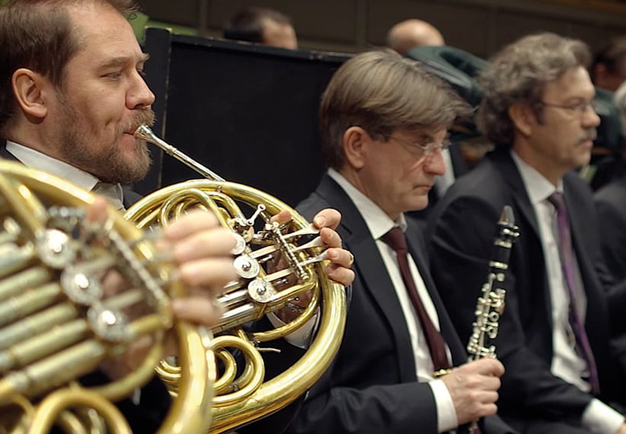Mozart and Shostakovich
Pablo Heras-Casado leads the Royal Stockholm Philharmonic Orchestra in fantastic symphonies.
About the video
- From a livestream 26 August 2020.
- The video is approximately one hour.
Highly acclaimed Spanish conductor Pablo Heras-Casado returns to the Royal Stockholm Philharmonic Orchestra. He has appeared with the foremost orchestras and at the world’s great opera houses, such as the Berlin Philharmonic, the Vienna Philharmonic, the Metropolitan Opera and Deutsche Oper Berlin.
Mozart’s Symphony No. 40 is a masterpiece of musical history and an unparalleled milestone. This highly accomplished work is filled with speed and anxiety, as well as elegance and refinement. Mozart usually composed his music for an ordering party, but he composed this symphony entirely for himself. In the introduction, we hear Mozart’s freedom to explore, as the orchestra begins accompanied by the alto violins. The melodies throughout consist of short motifs, and only in the second movement does the dark drama release its grasp on the music.
In the year of 1945 the horrors of World War II were put to an end, and Dmitri Shostakovich had plans for a ”symphony of victory” for soloists, choir and orchestra. However, the Ninth Symphony that he completed in August 1945 was short and playful, more in the spirit of Joseph Haydn. In connection with the world premier, Shostakovich commented, almost setting up a warning: ”In character, the Ninth Symphony differs sharply from my preceding symphonies, the Seventh and the Eighth. If the Seventh and the Eighth symphonies bore a tragic-heroic character, then in the Ninth a transparent, pellucid, and bright mood predominates.” Paradoxically, this was explosive: dances and hints of circus music challenged Josef Stalin’s image of Soviet power, and the symphony was banned in 1948.
-
The music
-
Wolfgang Amadeus Mozart Symphony No. 40 in g minor
-
Dmitry Shostakovich Symphony No. 9
-
Participants
-
Royal Stockholm Philharmonic Orchestra
-
Pablo Heras-Casado conductor




